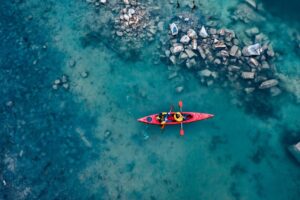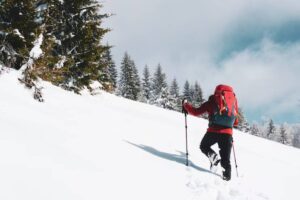The Travel Blog
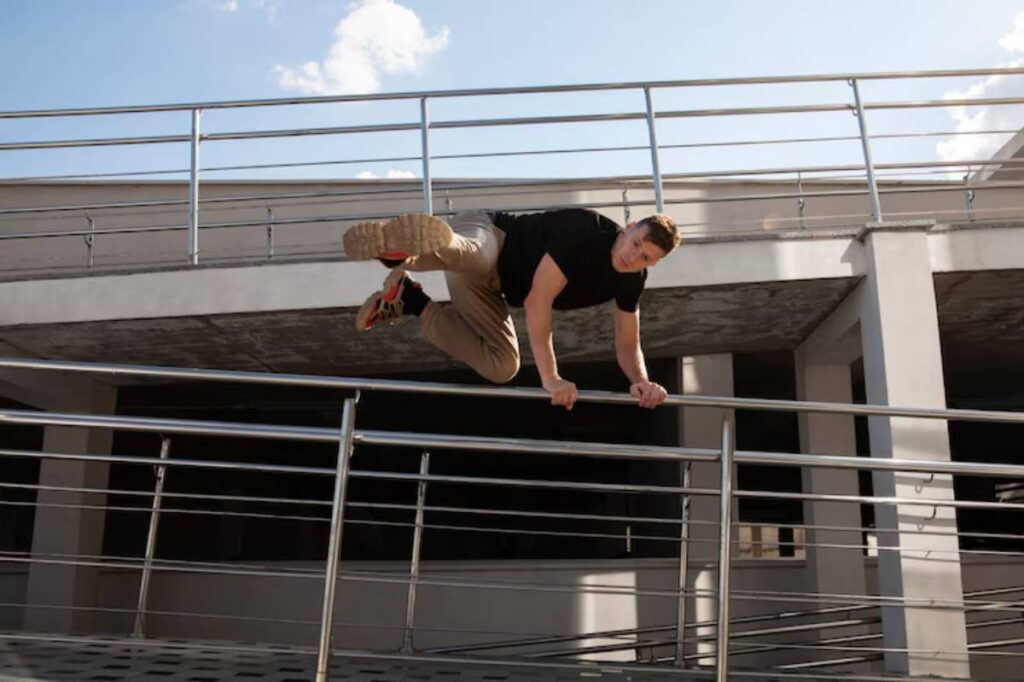
Parkour in Paris: Navigating the City of Lights
Leaping Through the Heart of Paris
What if you could experience Paris not as a tourist but as part of the city’s rhythm — leaping over stone rails, vaulting between staircases, and dancing across rooftops with the Eiffel Tower shimmering in the distance? Welcome to the world of parkour in Paris, where urban spaces become your playground and every obstacle is an opportunity.
This blog takes you deep into the birthplace of urban adventure sports, offering guidance for both newcomers and seasoned traceurs. From the top training spots and gear tips to cultural etiquette and safety, you’ll gain practical insight and real-world inspiration to begin (or elevate) your journey through city-based adrenaline activities in the French capital.
Why Paris Is the Mecca of Parkour
1. Parkour Was Born Here
Parkour traces its roots to the Parisian suburb of Lisses, where David Belle and a group of pioneers developed this discipline in the 1980s. It’s inspired by the French military’s méthode naturelle — movement training using real-world obstacles. What began as functional training soon evolved into a global culture of movement, artistry, and personal growth.
2. Architecture Meets Agility
Paris is a traitor’s dream.
Its blend of ancient stonework and modern urban layouts provides:
- Endless vaults and climbs on railings, walls, and benches
- Contrasting terrains — from cobblestones to parkour parks
- Open plazas like La Défense, perfect for practising flow and lines
3. A Welcoming Global Community
Paris hosts:
- Regular jam sessions (group meetups for training)
- World-class coaching via ADD Academy Paris
- International students and pros who travel just to train here
You won’t be alone — you’ll find your tribe here.
Best Places to Train Parkour in Paris
1. Parc de Bercy
- Level: Beginner to Intermediate
- Why it’s great: Wide, open space with rails, ledges, steps, and soft landings
- Vibe: Community-heavy; often hosts informal training meetups
2. La Défense
- Level: Intermediate to Advanced
- Why it’s great: A modernist maze of walls, stairwells, and handrails
- Vibe: Fast-paced and creative; popular with experienced traceurs
3. Buttes-Chaumont Park
- Level: All levels
- Why it’s great: Natural terrain blended with man-made structures; excellent for combining styles
- Vibe: Flow-friendly and scenic
4. Trocadéro
- Level: Intermediate
- Why it’s great: Near the Eiffel Tower; solid granite ledges, stairs, and rails
- Pro Tip: Train early in the morning to avoid heavy foot traffic
What You Need to Get Started
Essential Gear
- Shoes: Look for grip, flexibility, and minimal cushioning (Feiyue, Onitsuka Tiger, or Merrell Vapor Glove)
- Clothing: Breathable, non-restrictive sportswear — joggers, tees, hoodies
- Extras: Chalk (for grip), a small first-aid kit, and a reusable water bottle
Optional (but Handy)
- Action cam (like GoPro)
- Gloves for beginners (not always advised for grip development)
- Tape for finger protection
Training with a Local Academy
ADD Academy Paris
- Founded by original parkour practitioners
- Offers structured classes for all levels
- Emphasises safety, philosophy, and technique
What to Expect in a Class
- Warm-up, mobility, and mental prep
- Technical drills: precision jumps, rolls, vaults
- Combo runs and creative movement sequences
- Cool down and reflection
Language barrier? No problem — many coaches speak English, and movement is a universal language.
Solo Training Tips (and Etiquette)
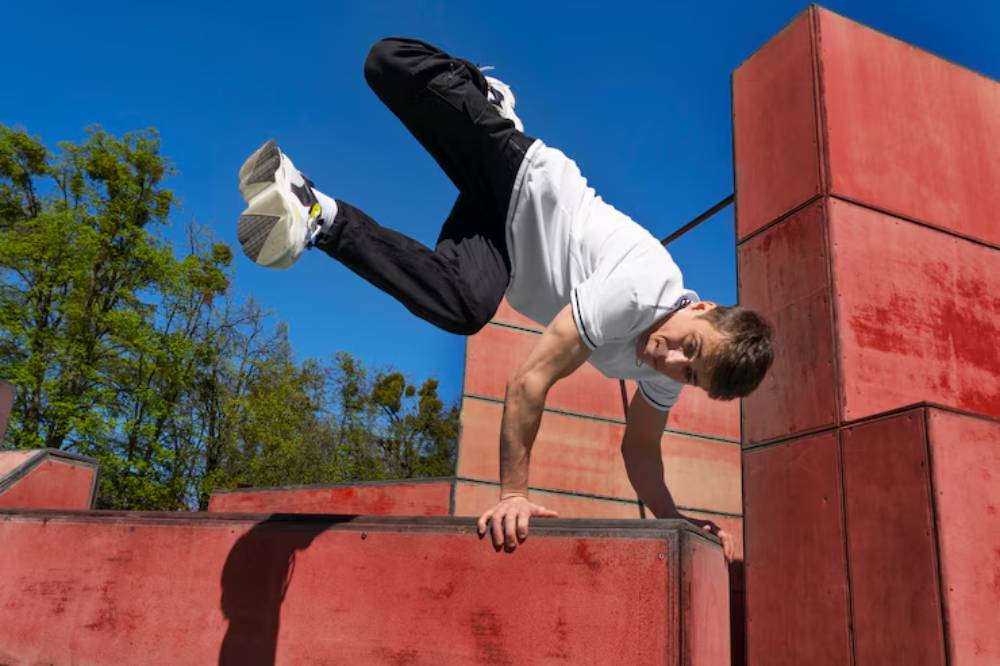
- Scout your environment first — check the surfaces, watch foot traffic
- Warm up properly, including ankles, wrists, and core
- Start small, then build up to dynamic jumps
- Respect the space — don’t damage property or interrupt others
- Say hello to locals — friendliness goes a long way
Curious how parkour compares to other adrenaline sports? Read How to Choose the Right Adventure Sport for You
A Day in the Life: A Traceur’s Tale
6:30 AM. The city is quiet. I lace up, stretch, and jog to Bercy. A few others are already there. We warm up in silence, then start to flow — one vault into a climb, a drop to precision, a fluid transition. It’s like a dance.
By midday, we’re at La Défense, testing bigger jumps and lines. The sun reflects off the glass buildings. Tourists pass us with curious stares. One child claps.
Evening finds us by the Seine, cooling down, replaying clips, and laughing at the near misses. Tired but alive — the best kind of exhausted.
Mindset & Philosophy: More Than Movement
Parkour teaches:
- Discipline – Progress comes from repetition and control
- Mindfulness – You must be fully present with every movement
- Resilience – Falls happen; you get up smarter each time
David Belle described parkour as the art of moving from point A to B in the most efficient way — but really, it’s about how you overcome what’s between them.
When’s the Best Time to Train in Paris?
| Season | Best For | Notes |
|---|---|---|
| Spring | Comfortable weather | Many outdoor jams; flowers in bloom |
| Summer | Long daylight hours | Early mornings are best (avoid crowds) |
| Autumn | Cool and crisp | Gorgeous urban backdrop |
| Winter | Quiet and focused | Wear layers and check for slippery surfaces |
Filming Your Progress
- Use a wide-angle lens (or GoPro)
- Mount it on rails or tripods for unique shots
- Golden hour (early morning or sunset) adds cinematic lighting
- Don’t let filming interrupt training flow — shoot after runs
Local Insight: Where to Refuel
- Hardware Société (Montmartre): hearty breakfasts post-session
- Wild & The Moon (Marais): organic smoothies and protein bowls
- La REcyclerie (Porte de Clignancourt): eco café with urban vibes
Safety First, Always
- Know your limits — train up gradually
- Check surfaces for moisture, loose stones, or debris
- Practice rolls and landings regularly
- Use spotters or start low for big drops
- Train in daylight when visibility is best
For more, read How to Stay Safe During Extreme Sports Activities
Bonus: Parkour-Friendly Day Itinerary in Paris
Morning: Warm-Up and Flow at Parc de Bercy
Start your day early at Parc de Bercy, where clean ledges, rails, and stairs provide the perfect mix for drills, combos, and low-impact landings. Great for easing into the rhythm.
Midday: Explore La Défense’s Urban Geometry
After a short metro ride, head to La Défense. Use the towering architecture and open plazas to test your precision jumps and vault lines. Bring lunch or grab a sandwich from a nearby boulangerie.
Afternoon: Mix Nature and Movement at Buttes-Chaumont
Shift gears with a scenic session. This park’s undulating terrain, tunnels, and stone bridges invite a hybrid of parkour and natural movement. A great spot for filming flow sequences.
Evening Wind-Down: Stretch Along the Seine
Cool down along the riverbanks. Jog past Notre-Dame, stretch near Pont Neuf, or do balance drills by the water’s edge as the lights come on across Paris.
Conclusion: Paris Moves Differently
Parkour in Paris is more than an extreme sport — it’s a way of rediscovering the city and yourself. Every ledge is a lesson, every wall a challenge, and every vault a victory. Whether you’re leaping for the first time or refining your flow, this city welcomes you with open arms and endless obstacles.
Ready to Jump In?
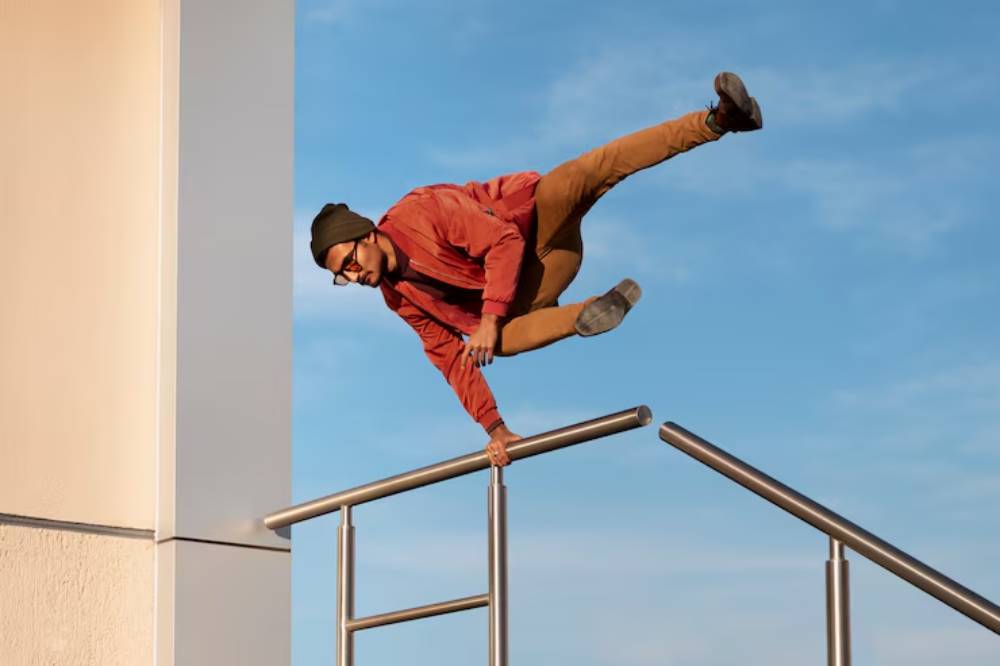
Plan your parkour tour through Paris. Share your vaults using #ParkourParis. Subscribe for more urban adventure sports and destination guides.




